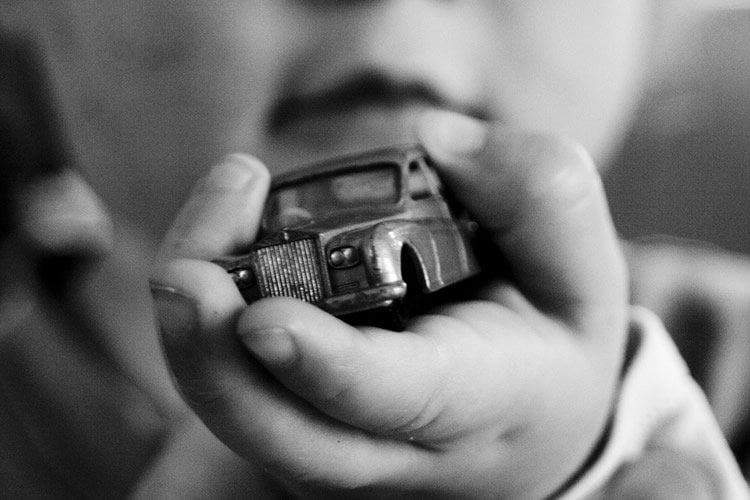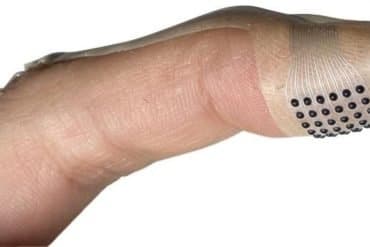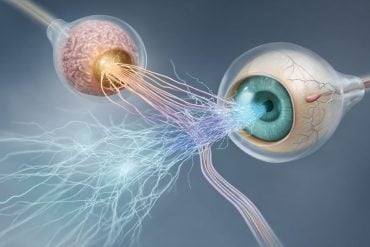Summary: According to researchers, children as young as 9 months prefer to play with toys specific to their gender.
Source: City University London.
Children as young as 9 months-old prefer to play with toys specific to their own gender, according to a new study from academics at City University London London and UCL.
The paper, which is published in the journal of Infant and Child Development, shows that in a familiar nursery environment significant sex differences were evident at an earlier age than gendered identity is usually demonstrated.
The research therefore suggests the possibility that boys and girls follow different developmental trajectories with respect to selection of gender-typed toys and that there is both a biological and a developmental-environmental components to the sex differences seen in object preferences.
To investigate the gender preferences seen with toys, the researchers observed the toy preferences of boys and girls engaged in independent play in UK nurseries, without the presence of a parent. The toys used in the study were a doll, a pink teddy bear and a cooking pot for girls, while for boys a car, a blue teddy, a digger and a ball were used.
The 101 boys and girls fell into three age groups: 9 to 17 months, when infants can first demonstrate toy preferences in independent play (N=40); 18 to 23 months, when critical advances in gender knowledge occur (N=29); and 24 to 32 months, when knowledge becomes further established (N=32).
Stereotypical toy preferences were found for boys and girls in each of the age groups, demonstrating that sex differences in toy preference appear early in development. Both boys and girls showed a trend for an increasing preference with age for toys stereotyped for boys.
Speaking about the study, Dr Brenda Todd, a senior lecturer in psychology at City University London said:
“Sex differences in play and toy choice are of interest in relation to child care, educational practice and developmental theory. Historically there has been uncertainty about the origins of boys’ and girls’ preferences for play with toys typed to their own sex and the developmental processes that underlie this behaviour. As a result we set out to find out whether a preference occurs and at what age it develops.

“Biological differences give boys an aptitude for mental rotation and more interest and ability in spatial processing, while girls are more interested in looking at faces and better at fine motor skills and manipulating objects. When we studied toy preference in a familiar nursery setting with parents absent, the differences we saw were consistent with these aptitudes. Although there was variability between individual children, we found that, in general, boys played with male-typed toys more than female-typed toys and girls played with female-typed toys more than male-typed toys.
“Our results show that there are significant sex differences across all three age groups, with the finding that children in the youngest group, who were aged between 9–17months when infants are able to crawl or walk and therefore make independent selections, being particularly interesting; the ball was a favourite choice for the youngest boys and the youngest girls favoured the cooking pot.”
Source: City University London
Image Source: This NeuroscienceNews.com image is in the public domain.
Original Research: Full open access research for “Preferences for ‘Gender-typed’ Toys in Boys and Girls Aged 9 to 32 Months” by Brenda K. Todd, John A. Barry and Sara A. O. Thommessen in Infant and Child Development. Published online May 24 2016 doi:10.1002/icd.1986
[cbtabs][cbtab title=”MLA”]City University London. “Infants Prefer Toys Typed to Their Gender.” NeuroscienceNews. NeuroscienceNews, 21 July 2016.
<https://neurosciencenews.com/gender-toys-neurodevelopment-4721/>.[/cbtab][cbtab title=”APA”]City University London. (2016, July 21). Infants Prefer Toys Typed to Their Gender. NeuroscienceNews. Retrieved July 21, 2016 from https://neurosciencenews.com/gender-toys-neurodevelopment-4721/[/cbtab][cbtab title=”Chicago”]City University London. “Infants Prefer Toys Typed to Their Gender.” https://neurosciencenews.com/gender-toys-neurodevelopment-4721/ (accessed July 21, 2016).[/cbtab][/cbtabs]
Abstract
Preferences for ‘Gender-typed’ Toys in Boys and Girls Aged 9 to 32 Months
Many studies have found that a majority of boys and girls prefer to play with toys that are typed to their own gender but there is still uncertainty about the age at which such sex differences first appear, and under what conditions. Applying a standardized research protocol and using a selection of gender-typed toys, we observed the toy preferences of boys and girls engaged in independent play in UK nurseries, without the presence of a parent. The 101 boys and girls fell into three age groups: 9 to 17 months, when infants can first demonstrate toy preferences in independent play (N = 40); 18 to 23 months, when critical advances in gender knowledge occur (N = 29); and 24 to 32 months, when knowledge becomes further established (N = 32). Stereotypical toy preferences were found for boys and girls in each of the age groups, demonstrating that sex differences in toy preference appear early in development. Both boys and girls showed a trend for an increasing preference with age for toys stereotyped for boys. Theoretical implications of the findings are discussed with regard to biological predispositions, cognitive development and environmental influences on toy preference.
“Preferences for ‘Gender-typed’ Toys in Boys and Girls Aged 9 to 32 Months” by Brenda K. Todd, John A. Barry and Sara A. O. Thommessen in Infant and Child Development. Published online May 24 2016 doi:10.1002/icd.1986







